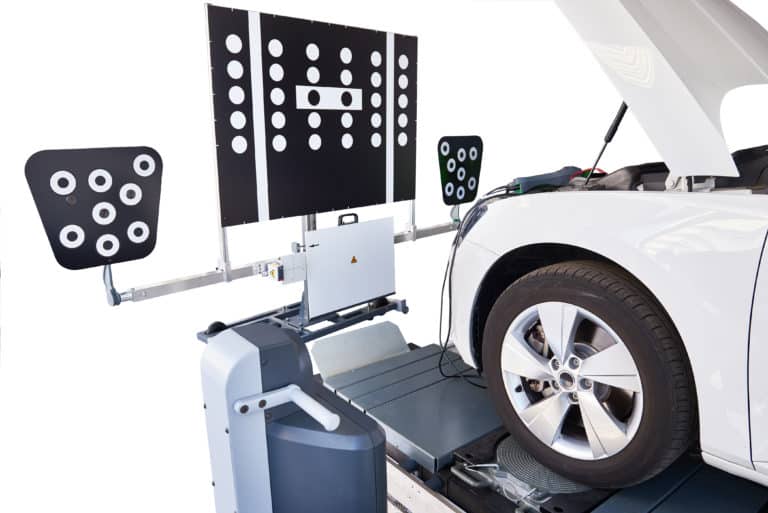A driver is driving along, everything feels normal, and then suddenly, the airbag warning light starts glowing on the dashboard. It’s small, it’s easy to ignore, but it immediately raises questions: Is the car still safe? Will the airbags work if an accident happens? The reasons behind this light coming on can range from a simple sensor issue to a more serious system malfunction. In this post, we’ll break down what the airbag light really means, the most common causes behind it, whether it’s safe to keep driving, and what it takes to fix it.
What Does the Airbag Light Mean?
The airbag is a component of the supplemental restraint system (SRS) and the warning light monitors the health of the entire restraint ecosystem. This includes the front and side airbags, curtain airbags, seat belt pretensioners, crash sensors, wiring, connectors, and the SRS control module itself. When any component reports a fault, the system stores a diagnostic trouble code (DTC), illuminates the light, and disables deployment. That’s the risk: if the light is on and a crash happens, one or more airbags may not deploy.
Here’s how it works behind the scenes. The SRS module continuously performs “key-on” self-tests and periodic checks while a person is driving. It looks for problems such as out-of-range resistance (too high or too low) in airbag “squib” circuits, unexpected voltage drops, sensor data that doesn’t make sense, or communication errors on the vehicle network. If it finds a fault, it sets the light and records a DTC. The light stays on until the fault is fixed and the code is cleared with a scan tool.
Ignoring it is risky; modern restraint systems are engineered as a system. Airbags, seat belt load limiters, and pretensioners work in milliseconds and in specific sequences. A single failure can compromise timing or disable devices outright. In short, the light means “investigate now, not later.”
If the light can point to many faults, what are the most common culprits?
Common Reasons Why the Airbag Light Comes On
This is where patterns help. Across makes and models, a handful of issues show up again and again.
Seat Occupancy Detection and Seat Wiring.
Many vehicles use a passenger seat occupancy mat (pressure or strain-gauge based) to decide whether to arm the passenger airbag. Broken mats, damaged harnesses under the seat, or loose yellow connectors that get tugged when the seat slides cause intermittent opens. Owners often notice the light appears after moving the seat all the way back or vacuuming underneath.
Clock Spring
The clock spring maintains the electrical connection to the driver’s airbag and wheel controls while allowing rotation. Over time, the ribbon cable can crack, especially on vehicles with a lot of low-speed steering input (think tight parking, delivery routes). Symptoms can include an SRS light plus inoperative horn or steering-wheel buttons.
SRS Control Module Crash Data
After even a minor collision, the module can store “crash event” data and lock the system until replacement or manufacturer-approved reprogramming. Internal failures (rare but real) also happen from moisture ingress, internal capacitor issues, or voltage spikes.
Pretensioner or Buckle Switch Problems
Seat belt pretensioners are part of the SRS and monitored like airbags. A high-resistance condition from corrosion at connectors near the B-pillar or floor pan can set the light. Buckle switches that detect “belt latched” can also fail, confusing the system.
Side or Front Impact Sensor Faults
These accelerometers live in harsh environments—front crash sensors near radiators, or side sensors low in the rocker panels. Road splash, salt, or prior body repairs can lead to corrosion or pinched wiring.
Battery, Charging, and Voltage Drops
Low system voltage during cranking, failing alternators, or a dying battery can trip SRS self-tests. If the light appeared after a battery replacement or jump-start, the system may need a proper scan and code clear after confirming voltage health.
Aftermarket Modifications and Previous Repairs
Non-OEM steering wheels, seat swaps, or stereo installs that disturb SRS wiring often trigger faults. Likewise, “salvage rebuilds” may have missing curtains, defeated connectors (resistors in place of airbags), or mislabeled components that light the SRS lamp once the system runs its checks.
Can You Drive with the Airbag Light On?
The car will still drive, but it shouldn’t be treated as business as usual. The presence of the light generally means all or part of the SRS is disabled. In a crash, the seat belts may be the only form of protection without the rapid pretensioning and airbag assistance.
A reasonable rule of thumb:
- Short, cautious trip directly to a qualified service facility? Acceptable.
- Commuting for days, hoping it goes away? Not recommended.
If the light appeared immediately after moving seats or doing minor work, it is best to try shutting the vehicle off, adjusting the seat to a middle position, and restarting. If the light persists, a diagnostic scan is necessary.
How to Diagnose and Fix an Airbag Light Issue
Here’s what a thorough, professional approach looks like. We advise always following the OEM procedures.
- Perform a full-system scan with a capable tool (beyond generic OBD-II).
SRS is a manufacturer-specific system. A professional uses a scan tool that can access the SRS module, read/clear codes, view live data (seat occupancy status, buckle switches, sensor health), and run guided tests. - Document codes and freeze-frame data before touching anything.
Good documentation captures exactly which circuit failed, what the voltage and resistance were at failure, and whether the fault is intermittent or permanent. This avoids misdiagnosis later. - Visual inspection of known failure points.
Under-seat connectors (look for yellow or orange plugs), seat rail harness rub, steering-wheel clock spring condition, sensor connectors at the front crash bar and rocker panels, and any evidence of water ingress. Many faults are physical. - Electrical testing with the right safety procedures.
Techs measure circuit resistance and continuity using approved resistor substitutes. The SRS circuits are sensitive. Professionals follow OEM service information to avoid deployment risk. - Resolve the root cause, not just clear the code.
Repair may mean reseating/repairing connectors, replacing a seat mat, installing a new clock spring, or replacing an impact sensor. If a module stored crash data, plan for OEM-approved replacement and coding. - Post-repair verification and any required calibrations.
With modern vehicles, post-collision or seat/component repairs can require module coding and specific calibrations. While SRS calibration is typically internal/self-learning, many safety features that interact with restraint timing may require reset procedures. If the airbag light follows a collision repair, advanced driver-assistance systems (ADAS) calibrations (camera/radar) may also be needed to ensure crash detection and advanced safety features (automatic emergency braking (AEB), lane support) are synchronized as designed.
How Much Does It Cost to Fix an Airbag Light?
Costs vary widely with cause and vehicle. A typical ballpark is:
- Scan and diagnosis: $100–$180 at an independent shop; $150–$250 at a dealership (often credited toward the repair).
- Under-seat connector/harness repair: $120–$300 when it’s a simple repair; more if the harness section must be replaced.
- Clock spring replacement: $200–$450 parts and labor on common models; luxury vehicles can be higher.
- Seat occupancy mat (passenger classification system): $350–$900, depending on whether the seat must be removed and re-trimmed.
- Front/side impact sensor: $150–$350 each, including labor if access is straightforward; rusted fasteners/body access can add time.
- SRS control module (post-crash locked or failed): $400–$1,100, including coding; collision-related replacements are often handled within insurance repairs.
- Related ADAS calibrations after structural/glass work: $200–$600 per system (camera, radar), depending on OEM procedures and whether static targets or dynamic road calibrations are required.
Keep in mind that the least costly path is a correct diagnosis the first time. Guess-and-replace can get expensive quickly, especially with safety systems.
Tap into a Growing Industry With the Help of Car ADAS Solutions
Whether an airbag light was triggered by a faulty sensor, wiring problem, or past accident, ignoring it means risking the airbags not working in the event of a crash. The good news is that with the right diagnostics and professional support, these issues can be identified and resolved quickly. From OBD-II scans to full ADAS calibration, staying proactive ensures the airbag system and all related safety technologies are working exactly as designed. At Car ADAS Solutions, we specialize in helping businesses launch and expand ADAS calibration services with a complete turnkey solution. From designing your facility and selecting OEM-compliant equipment to training technicians and supporting day-to-day operations, we’ll get you fully operational in as little as 45 days. Contact us today to learn more.







